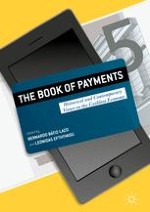2016 | OriginalPaper | Buchkapitel
10. Origins of the Modern Concept of a Cashless Society, 1950s–1970s
verfasst von : Bernardo Bátiz-Lazo, Thomas Haigh, David L. Stearns
Erschienen in: The Book of Payments
Verlag: Palgrave Macmillan UK
Aktivieren Sie unsere intelligente Suche, um passende Fachinhalte oder Patente zu finden.
Wählen Sie Textabschnitte aus um mit Künstlicher Intelligenz passenden Patente zu finden. powered by
Markieren Sie Textabschnitte, um KI-gestützt weitere passende Inhalte zu finden. powered by
